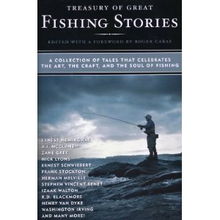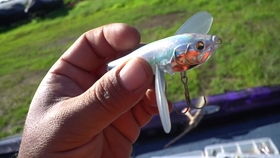Content:
Embarking on the exciting world of fishing can be both thrilling and challenging, especially for newcomers. Whether you're looking to cast your line into the serene waters of a local lake or the vast ocean, having the right techniques can make all the difference between a successful day out and a frustrating one. In this comprehensive guide, we'll delve into the essential fishing techniques that every beginner should know to enhance their chances of catching fish.
Understanding the Basics
Before you can start applying fishing techniques, it's crucial to understand the basics. Here's a rundown of the fundamental elements:
Fishing Gear: Familiarize yourself with the different types of rods, reels, lines, hooks, and lures. Each piece of equipment serves a specific purpose and understanding how they work together is key.
Fishing Spots: Learn about the different types of fishing spots, such as rivers, lakes, streams, and the ocean. Each body of water has its unique characteristics and fish species.
Fish Behavior: Understanding the habits and feeding patterns of the fish you're targeting is vital. This knowledge will help you determine the best times and techniques to use.
Casting Techniques
Casting is the act of throwing your line into the water. Here are some casting techniques for beginners:
Overhand Cast: This is the most common casting method. Hold the rod with both hands, keeping the line straight and your wrist firm. Swing the rod back and forth, allowing the line to follow the path of your swing.
Sidearm Cast: Use this technique when you need to cast a longer distance or when there are obstructions. Hold the rod with one hand and swing it across your body.
Roll Cast: Ideal for casting into tight spaces, the roll cast involves a gentle roll of the wrist to propel the line forward.
Baiting and Luring
Choosing the right bait or lure is essential for attracting fish. Here's how to approach it:
Natural Bait: Live bait, such as worms, minnows, or crickets, can be highly effective. Learn how to rig your bait properly to ensure it moves naturally in the water.
Artificial Lures: Artificial lures come in various shapes and sizes, designed to mimic real fish prey. Practice different retrieves to see which one works best for the fish you're targeting.

Fishing Techniques for Different Fish Species
Different fish species require different techniques:
Freshwater Fish: For species like bass, walleye, and trout, use techniques like casting, still fishing, and fly fishing. Focus on the fish's feeding patterns and use appropriate baits or lures.
Saltwater Fish: Saltwater fishing can be quite different. Techniques like bottom fishing, popping, and fly fishing are common. Pay attention to tide charts and weather conditions, as they can significantly impact fish activity.
Reading the Water
Understanding water conditions is crucial for successful fishing:
Currents: Observe the flow of the water. Fish often congregate in areas with strong currents.
Structure: Look for underwater structures like rocks, logs, and weed beds, as these can be prime spots for fish to hide and feed.
Shadows: Fish often feed in the shade, so casting into areas with overhead cover can be more productive.
Safety and Etiquette
Always prioritize safety and good fishing etiquette:
Safety Gear: Wear appropriate clothing and footwear, and carry safety gear like a first aid kit and a whistle.
Respect the Environment: Keep the area clean and respect wildlife. Follow local fishing regulations and guidelines.
Practice and Patience
Lastly, remember that fishing is a skill that takes time to develop. Practice regularly, and don't get discouraged by initial challenges. Patience is key, as fish can be unpredictable.
In conclusion, mastering the art of fishing involves a combination of knowledge, practice, and patience. By understanding the basics, mastering casting techniques, selecting the right bait or lure, and adapting to different fish species and environments, you'll be well on your way to becoming a proficient angler. So, grab your gear, head to your favorite fishing spot, and enjoy the tranquility and rewards of the water's embrace. Happy fishing!












